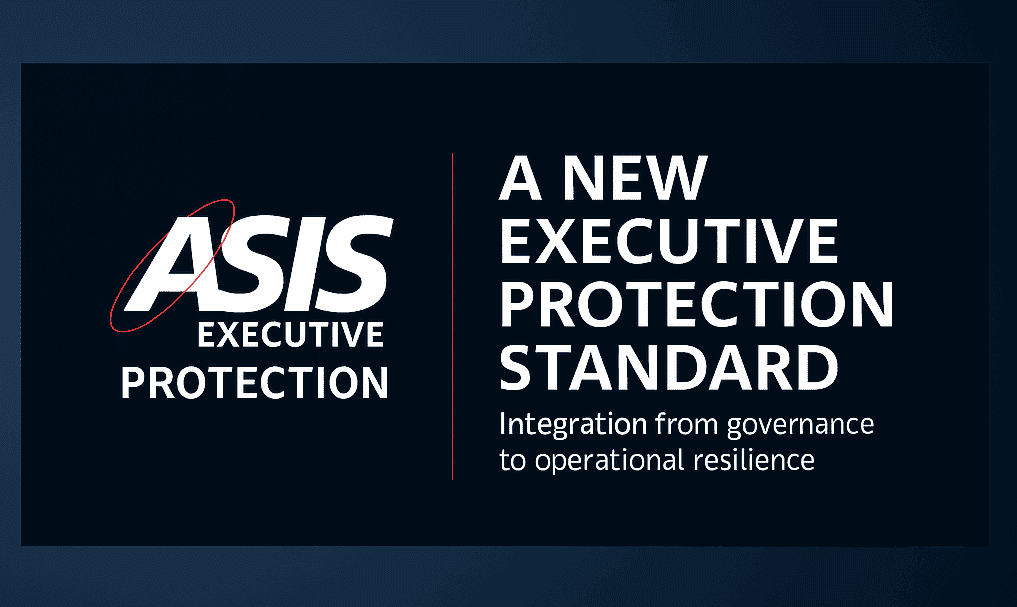From bodyguards to strategy: why the ASIS Executive Protection standard marks a turning point
ASIS International’s Executive Protection sets a new milestone in corporate risk management. Until recently, the concept was mainly associated with armored vehicles or discreet bodyguards. Today, the new Executive Protection Standard (EP Standard) redefines that role, integrating it into governance and organizational resilience. Published in September 2025, the standard focuses on leadership, resources, continuous improvement, and alignment with business objectives.
What is Executive Protection?
It is a specialized security discipline focused on preventing risks and ensuring the physical, psychological, and reputational integrity of executives, officials, and other individuals exposed to specific threats.It goes far beyond simple physical escorting: it combines risk analysis, strategic planning, preventive intelligence, and crisis management. Its goal is to enable protected individuals to carry out their activities safely and normally, integrating protection into their personal, corporate, and operational environments in a discreet and efficient manner.
What is driving this change?
- The complexity of the global environment: more frequent travel, digital threats, interconnected supply chains, and reputational interdependence.
- The need to align protection with the business itself, rather than viewing it as an operational “add-on.”
- And the urgency to measure, audit, and continuously improve executive protection programs , something that, until now, has been more art than science.
According to Charles Tobin, Chair of the Technical Committee that developed the ASIS International Executive Protection Standard:
“This standard reflects the collective experience of seasoned executive protection professionals who understand that effective protection requires far more than physical security. It demands strategic thinking, meticulous planning, and flawless coordination.”
Three key elements that differentiate the new ASIS International Executive Protection standard
- From tactical to programmatic: Rather than focusing solely on what the protection team does, though that remains important, the EP Standard calls for the entire organization to establish a structured program with clear policies, resource allocation, defined roles, and performance metrics.
- Integration with Risk Management:The focus is no longer just “How do we protect person X?” but rather “How does the organization manage the risks that could affect both person X and the business?” This requires threat analysis, vulnerability assessment, and alignment with the organization’s overall risk management strategy.
- Scalability and global governance: The standard follows the PDCA (Plan–Do–Check–Act) model —the same framework used in many ISO management systems— which allows it to be applied both to large multinationals and to smaller organizations with a single exposed leader. It also ensures that all documentation is consistent, auditable, and defensible in the face of crises or compliance reviews.
Who is this standard for?
It is aimed particularly at organizations, corporate security managers, risk executives, and senior leadership who design and oversee executive protection programs. The focus is not solely on agents or bodyguards, but on the organizational framework that makes protection sustainable and effective.
What the standard is not
- It is not an individual certification for protection agents or bodyguards.
- It does not prescribe specific tactics , for example, how to drive or react in each scenario.
- It is not mandatory: its adoption is voluntary, although it serves as a benchmark for professional best practices.
Why is it relevant for your organization?
In a world where leadership visibility, corporate reputation, and global exposure are increasing, having a well-managed executive protection program is no longer a luxury —it has become a strategic necessity.
A program aligned with the EP Standard offers:
- A common language between security, leadership, and business.
- Traceable and defensible processes in the face of audits or crises.
- True resilience: the ability to absorb the unexpected, adapt, and keep operating..
What does it mean for organizations?
The publication of the EP Standard marks a turning point: it compels organizations to rethink how they structure the protection of their leaders and how they integrate it into their risk management model. The most forward-thinking organizations are already reviewing their governance frameworks, resources, and performance metrics to align with a more documented, measurable, and strategic approach. More than simply applying a checklist, the challenge lies in embedding executive protection into the corporate DNA ,with processes capable of sustaining continuity and trust, even in highly exposed environments.
The new ASIS International standard reminds us that executive protection is no longer just about bodyguards or armored vehicles. It is a core business function that protects not only people, but also decisions, reputation, and continuity.
Is your organization truly prepared to protect its leaders against threats that evolve every day?
Today’s risks range from cyberattacks and information leaks to reputational crises and physical incidents , demanding a comprehensive, integrated approach to security. At ACK3, we help organizations implement this framework to anticipate, respond, and maintain operational continuity —even in the most uncertain environments.

